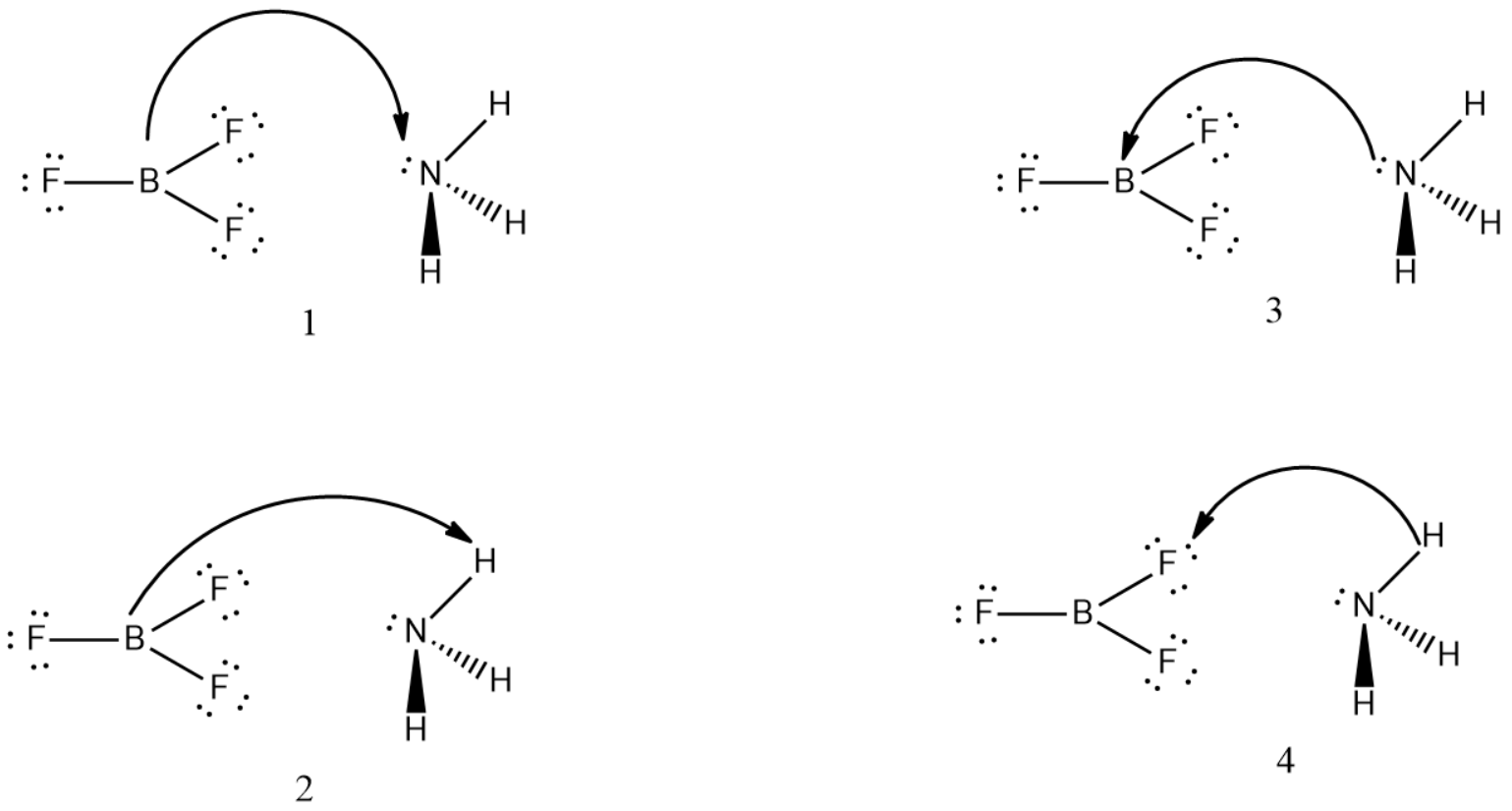

(A). Picture (1) is correct;
(B). Picture (2) is correct;
(C). Picture (3) is correct;
(D). Picture (4) is correct;

Answer
506.7k+ views
- Hint: A Lewis base will donate a pair of electrons while a Lewis acid will accept a pair of electrons. In this case, the electrons will be accepted by the one who has a vacant orbital.
Complete step-by-step solution -
The interaction between is a Lewis acid-base interaction, in which one of them donates a pair of electrons to the other. According to Lewis acid-base theory, the Lewis acid will accept a pair of electrons and a Lewis base will donate a pair of electrons.
The electronic configuration of Boron (B) is
A valence orbital is the outermost orbital from which the electron is gained or lost in case of ionic bond formation or from which the electron is shared in case of covalent bond formation.
Boron has 3 electrons in valence orbitals, so it forms 3 bonds with fluorine in
A vacant p orbital can accept electrons and thus boron having a vacant p orbital can accept electrons. So, it is a Lewis acid.
The electronic configuration of Nitrogen (N) is
2p Orbital having 3 electrons. Therefore, it cannot accept any more electrons.
The 2s orbital is filled and has a pair of electrons. So, that is the pair of electrons that nitrogen can donate. So, in this case,
In this case, Picture 2 represents this scenario correctly, and therefore, option B is the correct one.
Note: Having the vacant orbital is the main key to this problem. Both boron and nitrogen form 3 bonds with 3 fluorine atoms and 3 hydrogen atoms respectively. But only one of them has a vacant orbital to accommodate the incoming electrons. Don’t confuse between them.
Complete step-by-step solution -
The interaction between is a Lewis acid-base interaction, in which one of them donates a pair of electrons to the other. According to Lewis acid-base theory, the Lewis acid will accept a pair of electrons and a Lewis base will donate a pair of electrons.
The electronic configuration of Boron (B) is
A valence orbital is the outermost orbital from which the electron is gained or lost in case of ionic bond formation or from which the electron is shared in case of covalent bond formation.
Boron has 3 electrons in valence orbitals, so it forms 3 bonds with fluorine in
A vacant p orbital can accept electrons and thus boron having a vacant p orbital can accept electrons. So, it is a Lewis acid.
The electronic configuration of Nitrogen (N) is
2p Orbital having 3 electrons. Therefore, it cannot accept any more electrons.
The 2s orbital is filled and has a pair of electrons. So, that is the pair of electrons that nitrogen can donate. So, in this case,
In this case, Picture 2 represents this scenario correctly, and therefore, option B is the correct one.
Note: Having the vacant orbital is the main key to this problem. Both boron and nitrogen form 3 bonds with 3 fluorine atoms and 3 hydrogen atoms respectively. But only one of them has a vacant orbital to accommodate the incoming electrons. Don’t confuse between them.
Latest Vedantu courses for you
Grade 11 Science PCM | CBSE | SCHOOL | English
CBSE (2025-26)
School Full course for CBSE students
₹41,848 per year
Recently Updated Pages
Master Class 11 Economics: Engaging Questions & Answers for Success

Master Class 11 Business Studies: Engaging Questions & Answers for Success

Master Class 11 Accountancy: Engaging Questions & Answers for Success

Master Class 11 English: Engaging Questions & Answers for Success

Master Class 11 Computer Science: Engaging Questions & Answers for Success

Master Class 11 Maths: Engaging Questions & Answers for Success

Trending doubts
State and prove Bernoullis theorem class 11 physics CBSE

1 ton equals to A 100 kg B 1000 kg C 10 kg D 10000 class 11 physics CBSE

State the laws of reflection of light

One Metric ton is equal to kg A 10000 B 1000 C 100 class 11 physics CBSE

1 Quintal is equal to a 110 kg b 10 kg c 100kg d 1000 class 11 physics CBSE

Difference Between Prokaryotic Cells and Eukaryotic Cells




